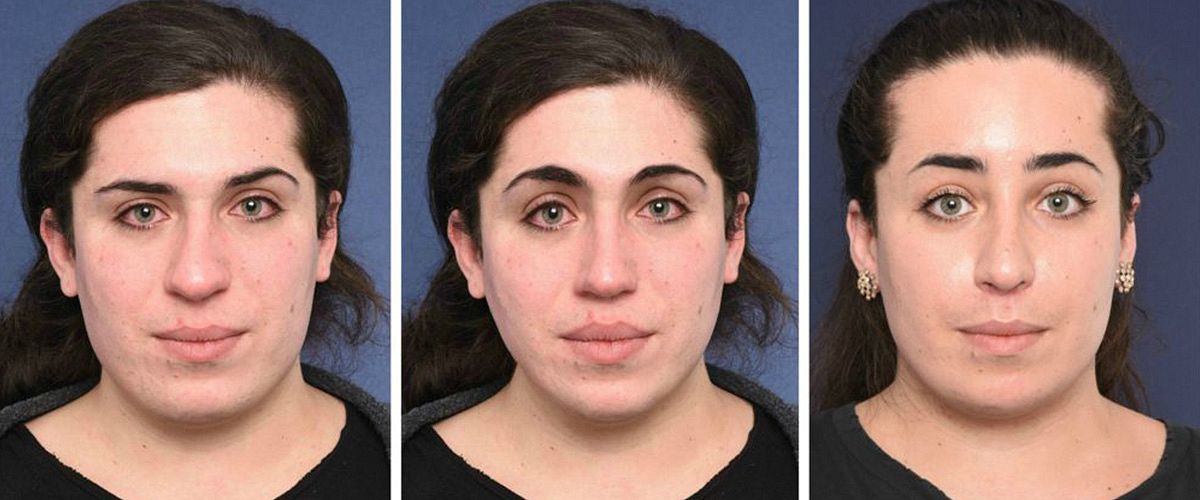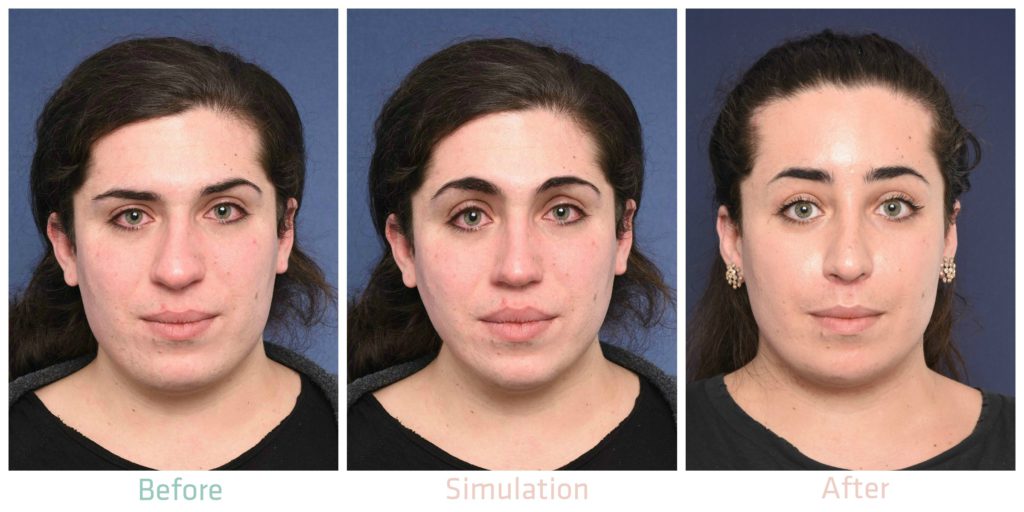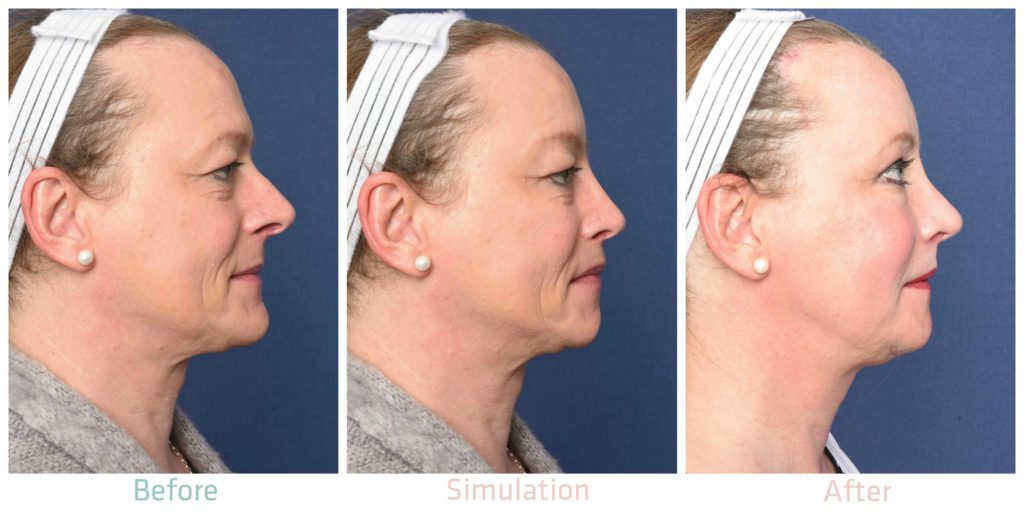Sense and non-sense of simulations before your facial feminization surgery

There are four ways simulations before a facial feminization surgery could make sense:
1. An impression of how the patient could look after FFS
The most obvious reason to make simulations before a facial feminization surgery would be that it gives the patient a good impression of the way she could look after the FFS surgery.
But how realistic are the simulations? The answer: digital simulations in frontal view never even come close to reality. Why, you ask? There are several reasons for it. Even when the surgeon himself makes the simulation, a picture of a face in frontal view consists of many details in shape, lines, shades, and lighting. Does anyone really believe that with a software program you can simulate what this person will look like after her surgery? I have tried to alter pictures of patients taken before their surgery into pictures taken of the same patients after their surgery, it’s just impossible. Imagine you also have to PREDICT the result of the surgery?
Everybody knows how rare a painted portrait that really ‘catches’ the face is. The reason is that it’s just sooooo difficult. And the painter only has to paint the face that’s sitting in front of him. The FFS-surgeon has to ‘paint’ a face that doesn’t yet exist which can be challenging to say the least.

So, there is only one conclusion: thinking you can alter pictures taken in frontal view hoping to get an accurate simulation of the results of an FFS surgery is unrealistic. A simulation might give you a rough idea on how things might look like post-surgery but by no means will it be 100% accurate.
What about simulations in profile view? That’s different. If you look at a picture of a face in profile view you tend to really look at the overall profile, which is a line. A surgeon that really has the skills to create a profile the way he simulated it can show the patient approximately what to expect using a simulation. The surgeon should warn the patient though to watch ONLY the profile and not the side of the face.
The old Egyptians were clever. They painted people always in profile. That’s so much easier.
2. Simulations can be helpful as a communication tool
What do the surgeon and the patient have in mind? Are the ideas of what the desired outcome of the surgery should be be the same for the surgeon as for the patient?
If the patient is not happy with the ideas of the surgeon she might decide to go somewhere else. If the surgeon doesn’t want or feels incapable to create what the patient wishes during the simulation the surgeon, can at this time, opt out of performing the surgery. For the reasons mentioned above, it is my opinion that simulations in frontal view are unrealistic and not helpful even as a communication tool. But in profile they can be beneficial to both parties.

3. Simulations are possibly helpful for the surgeon
If the surgeon uses the simulations in profile to measure the amount of millimeters the profile needs to be changed and has the experience and the skills to do so, making a simulation prior to the surgery can improve its outcome. But this is only possible if the same measurements are being repeated during the surgery.
4. FFS simulations work as marketing tools
Simulations really work better as marketing tools. But that’s only beneficial for the surgeon, not for the patient.
For years I have refused to make simulations in frontal view, because I knew they are not realistic. In profile I have frequently used them in combination with measurements on the pictures and during the surgery. A few months ago I changed my policy because patients kept asking for simulations in frontal view. The result is that my booking rates after consultations would go up but meeting that expectation for the patient proved to be impossible almost each time. But I always tell my patients that these simulations are not 100% accurate and outcomes can change.
So, in conclusion:
- Frontal view simulations should be taken with a grain of salt. It’s important to understand that things can change and 100% accurate surgical predictions are impossible to make. Stay away from surgeons that tell you differently. They often promise something they can’t deliver.
- Simulations in profile view in the hands of a very skillful surgeon can have predictive value and can help as a communication tool to improve the outcome of the surgery.
- Beware of surgeons that try to sell you a surgery by means of simulations. Ask them to show you simulations and after pictures of past patients in order to better gauge the accuracy. You’ll find that simulations before a facial feminization surgery can have some sense but also a lot of nonsense so be safe. It’s important to make the right decisions when it comes to facial feminization surgery.
Related articles:
We are doing our very best to keep this information up-to-date. In case you see anything that no longer seems accurate, or in case you have a question, please fill out the form below!
